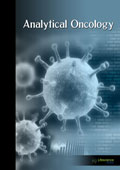jao
|
|
Abstract: Myeloid derived suppressor cells (MDSC) are specialized immunoregulatorycells and major cause of immunosuppression in oral cancer tumor microenvironment. Which are generated by various mediators of chronic inflammation. MDSC exerts its effects by two mechanisms, first is enzymatic mechanism by two enzymes which are elevated in MDSC are arginaseand iNOS2, second is non-enzymatic mechanism by ROS, peroxynitrate ,L-selectin and interaction with other immune cells. It also has a role in progression of oral cancer by secreting inflammatory mediators. This article brief about the MDSC in immune regulation and tumor progression in oral cancer tumor microenvironment. Keywords: iNOS, Arginase 1, COX-2, HIF-1 Alfa, T regs, Peroxynitrate, S 100 A8/A9, ROS. Download Full Article |
|
|
Abstract: Deep vein thrombosis (DVT) is a common disease that can lead to death. Many studies have looked at the chance of occurrence and the factors affecting thrombosis as one of the complications of cancer. This chance increases in patients with more severe cancer. The progression of cancer and the risk of death in patients with DVT is more severe and with a worse prognosis. But according to our knowledge, there is no accurate report of the incidence and diagnosis of cancer long after thrombosis .In our case, lung adenocarcinoma arose months after the onset of frequent thrombosis in a healthy person. So recommended to consider the risk of developing cancer in patients with recurrent thrombosis. Keywords: Lung, Adenocarcinoma, Thrombosis. Download Full Article |
|
|
Abstract: Prostate cancer is an internationally important health problem in man, particularly in developed countries. The aim of this exploratory study was to clarify the differences between the prostatic levels of chemical elements in patients with malignantly transformed prostate (PCa) and healthy male inhabitance. Prostatic tissue levels of 66 chemical elements were prospectively evaluated in 60 patients with PCa and 37 healthy males. Measurements were performed using a combination of five non-destructive and destructive analytical methods. A significant increase in the mean level of Ag, Al, Au, B, Ba, Be, Bi, Br, Ce, Cr, Cu, Dy, Er, Fe, Gd, Hg, Ho, Li, Mn, Nd, Ni, Pr, Sb, Si, Sm, Sn, Sr, Tb, Th, Ti, Tl, Tm, Y and Zr accompanied a decrease in the mean level of Ca, Cd, Co, K, Mg, Na, P, Rb, S, Sc, Se, and Zn was observed in the cancerous prostates. It was not found any differences in the mean prostatic level of other chemical elements including Cs, La, Mo, Nb, P, Pb, U, and Yb between PCa patients and healthy males. This work’s results reveal that in malignantly transformed prostate the chemical element metabolism is drastically disturbed. Keywords: Prostate cancer, prostatic chemical element contents, energy dispersive X-ray fluorescence analysis, neutron activation analysis, inductively coupled plasma atomic emission spectrometry, inductively coupled plasma mass spectrometry. |
|
|
Abstract: Inflammation is the physiological response to an injury, it could be chemical, thermal, physical and infectious for reparative activity to injury. Recent data suggest that chronic inflammation leads to cancer development. Inflammatory mediators released to surrounding environment due to inflammation by inflammatory cells acts as a defensive or offensive depends on secretion of chemical mediators of inflammation such as growth factors, cytokines activating various transcriptional pathways bring about cell proliferation, angiogenesis further leads to tumor growth. This article describe the role of inflammatory cells and its mediators to development of cancer, various underlying unanswered future challenge questions in association with inflammation and cancer. Keywords: TLR, PAMPs, DAMPs, TNF-α, IL-1β, IL-6, NF-KB, STAT-3, HIF-1α, TGF-β, Tumor associated macrophages, Tumor associated neutrophils. Download Full Article |
|
|
Abstract: In the year 2000, a wide campaign of screening and treatment of the dysplastic lesions of the cervix was initiated in Cameroun. The precancerous lesions of the cervix are the most important demonstration of gynecological infection by the AIDS. As these lesions remain little documented in Cameroun, we carried out a study which the goal was to determine the prevalence of the precancerous lesions among positive AIDS women. It is about a descriptive study with a retrospective collection of data carried out between 2010 and 2016 among 253 positive AIDS women having carried out a consultation in the Hospital complex and University of Yaounde aged from 18 to 80 years. The analysis of the data was essentially carried on: the age, clinical Factors data of risk of the precancerous lesions, anatomo-pathological search of precancerous lesion. AIDS status and/or the catch the antiretroviral one. The Software SPSS was used for the analysis of data. The test of Chi2 for the comparison of the variables. A variable was considered significant if P<0,05. 53 women presented precancerous lesions i.e. 20,94%. The lesions were in 92% of the squamous lesions with intra epithelial of low rank and in 8% of the squamous lesions with intra epithelial of high rank. 22 women (38%) were aged between 36 and 45 years; 22 women (40%) were housewives; 18 women (31%) were single people; 36 women (67%) were multipares; 45 women (85%) did not smoke; 33 women (62%) had a peak of CD4 located between 500-1000/mm3;14 women (26%) did not have opportunist diseases 10 women (19%) had the zona, 8 women (15%) of tuberculosis and 9 women (17%) suffered from HTA. Because of the high potential risk of precancerous lesions in our population of study, we recommend a regular clinical follow-up of the patients presenting high factors of risk, and a widened access to antiretroviral. Keywords: Precancerous lesions, AIDS, Prevalence. |


